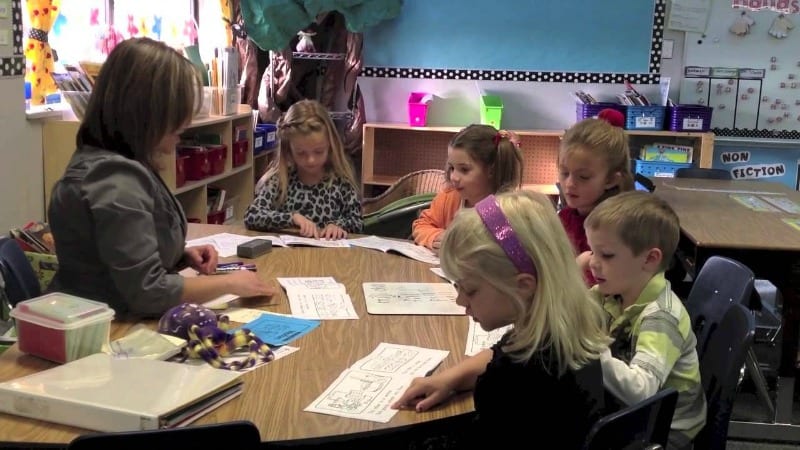

There is no more magical time of day in an elementary classroom than reading time. Students tucked away at their desks or snuggled into pillows on the rug, lost in the dreamy lull of a good book. Small groups of children, gathered around a kidney-shaped table, conferring quietly with a teacher as they work together to unravel the complicated process of reading.
Having the opportunity to accompany students on the wondrous journey of learning to read is one of the greatest parts of the job. But it’s also a lot of work. If you’re feeling overwhelmed by the privilege and responsibility, have no fear. Here are the basics:
According to Fountas and Pinnell, who pretty much wrote the bible on guided reading, Guided Reading: Responsive Teaching Across the Grades , guided reading is “ a context in which a teacher supports each reader’s development of effective strategies for processing novel texts at increasingly challenging levels of difficulty.” Which, in simpler language, means small-group reading instruction that allows teachers to meet students where they are and lead them forward with intention and precision. As a result, students are able to process increasingly challenging books with fluency and comprehension.
Let’s be honest, in the course of a typical day, there is little time for classroom teachers to work one-on-one with students. Scheduling a guided reading block as part of reading time is a perfect way to meet with students in small groups to monitor their progress and help them work on skills that will make them better readers.
The benefits of guided reading for students, according to PBS , are numerous. When students receive individualized teaching time, they learn skills and strategies that allow them to develop as individual readers. With support and scaffolding, students learn to read for meaning and build the stamina to read difficult texts. In addition, guided reading is an opportunity for teachers to introduce quality literature to strengthen students’ reading comprehension skills.
Every classroom and every group of students are unique, but there are some universal standards for making guided reading work in any classroom community. Here are the basic guidelines:
Every teacher has their own tips and tricks, but generally a guided reading lesson follows this basic pattern:
The depth and breadth of information available about guided reading is incredible. Here are a few resources to get you started:
Need book recommendations? Check out our Book List Collection for suggestions for all levels from Pre-K to high school.
ADVERTISEMENTAnd to get more help with guided reading, check out our WeAreTeachers—First Years group on Facebook. It’s a spot just for new teachers to find support and chat about teaching life.